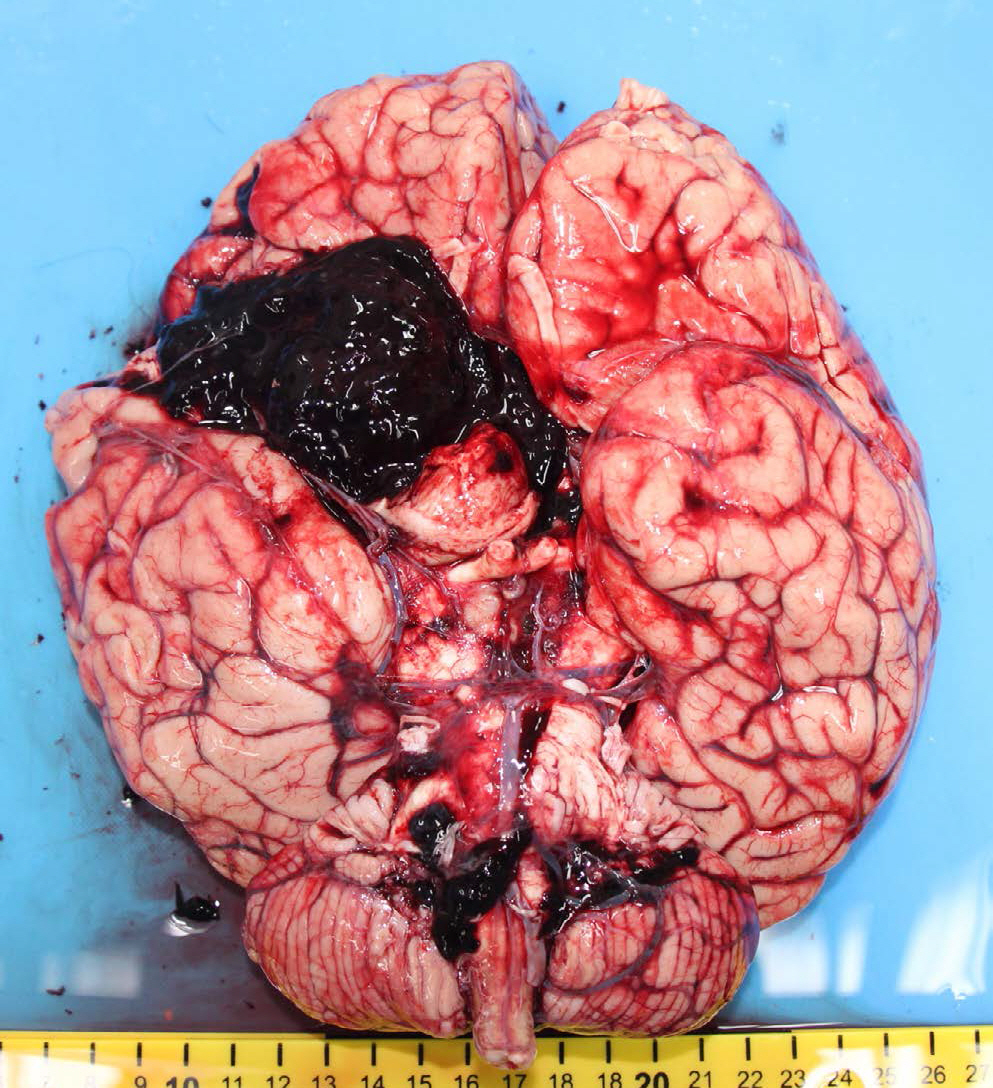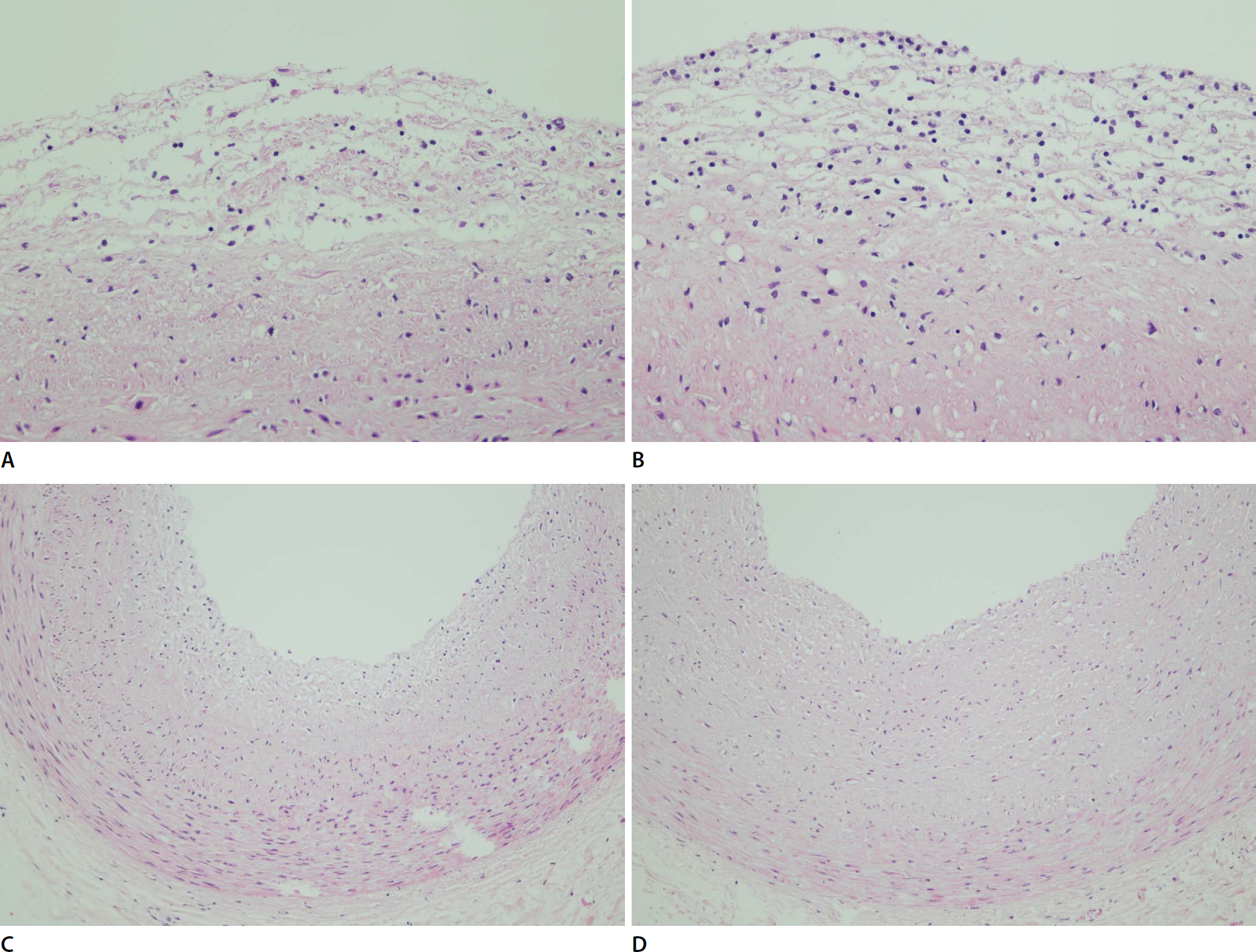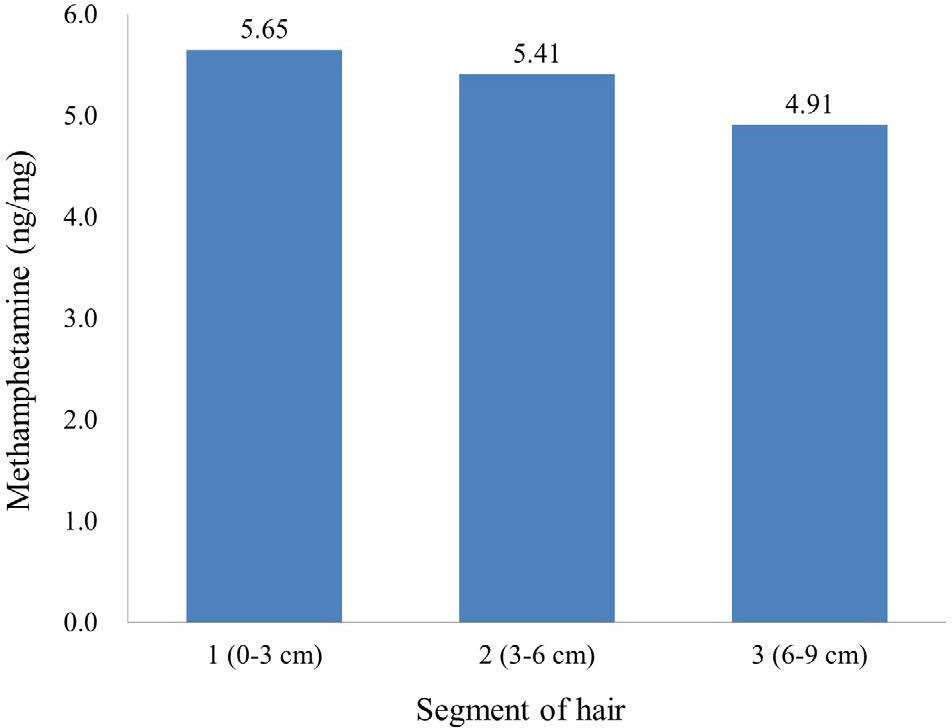Korean J Leg Med.
2018 Aug;42(3):98-101. 10.7580/kjlm.2018.42.3.98.
A Fatal Intracerebral Hemorrhage due to Chronic Methamphetamine Use
- Affiliations
-
- 1Biomedical Research Institute, Chonnam National University Hospital, Gwangju, Korea.
- 2Emergency Medical Center, Chonnam National University Hospital, Gwangju, Korea.
- 3Toxicological Division, National Forensic Service Gwangju Institute, Jangseong, Korea.
- 4Department of Forensic Medicine, Chonnam National University Medical School, Gwangju, Korea. jtpark@jnu.ac.kr
- KMID: 2419460
- DOI: http://doi.org/10.7580/kjlm.2018.42.3.98
Abstract
- The authors report a case of an otherwise healthy 33-year-old man who presented with intracerebral hemorrhage in the right frontal lobe following chronic methamphetamine use. An autopsy was performed within 2 days after death. The postmortem examination revealed cerebral edema and intracerebral and intraventricular hemorrhage. Microscopic examination revealed endovasculitis in the systemic vessels including the aorta and carotid and coronary arteries, but no aneurysm or arterio-venous malformation. Acute toxicity and chronic methamphetamine use was verified using blood and segmental hair analysis, respectively. Cerebrovascular accidents including stroke and intracerebral and subarachnoid hemorrhage are rare in young persons, but methamphetamine use is a risk factor for cerebrovascular accidents in young adults. Therefore, forensic pathologists should be aware of the acute and chronic harmful effects of methamphetamine. Detailed history taking and toxic screening tests for illicit drug use, especially methamphetamine, as well as a meticulous postmortem examination should be conducted in young patients who died due to cerebrovascular accident.
MeSH Terms
Figure
Reference
-
1. Chiu ZK, Bennett IE, Chan P, et al. Methamphetamine-related brainstem haemorrhage. J Clin Neurosci. 2016; 32:137–9.
Article2. McGee SM, McGee DN, McGee MB. Spontaneous intracerebral hemorrhage related to methamphetamine abuse: autopsy findings and clinical correlation. Am J Forensic Med Pathol. 2004; 25:334–7.3. Yen DJ, Wang SJ, Ju TH, et al. Stroke associated with methamphetamine inhalation. Eur Neurol. 1994; 34:16–22.
Article4. Lineberry TW, Bostwick JM. Methamphetamine abuse: a perfect storm of complications. Mayo Clin Proc. 2006; 81:77–84.
Article5. Shibata S, Mori K, Sekine I, et al. Subarachnoid and intracerebral hemorrhage associated with necrotizing angiitis due to methamphetamine abuse: an autopsy case. Neurol Med Chir (Tokyo). 1991; 31:49–52.6. Matick H, Anderson D, Brumlik J. Cerebral vasculitis associated with oral amphetamine overdose. Arch Neurol. 1983; 40:253–4.
Article7. Ho EL, Josephson SA, Lee HS, et al. Cerebrovascular complications of methamphetamine abuse. Neurocrit Care. 2009; 10:295–305.
Article8. Islam MN, Kuroki H, Hongcheng B, et al. Cardiac lesions and their reversibility after long term administration of methamphetamine. Forensic Sci Int. 1995; 75:29–43.
Article
- Full Text Links
- Actions
-
Cited
- CITED
-
- Close
- Share
- Similar articles
-
- Cerebral Vasculitis and Intracranial Hemorrhage Associated with Methamphetamine Abuse
- Postmortem Findings in Two Cases of Chronic Methamphetamine Abuse
- Lethal Hemorrhage Following Laparoscopic Cholecystectomy Complicated with Medicolegal Issues
- Intracerebral Hemorrhage Following Evacuation of a Chronic Subdural Hematoma
- Inteacerebral and Brain Stem Hemorrhage Following Evacuation of Chronic Subdural Hematoma and Hygroma




